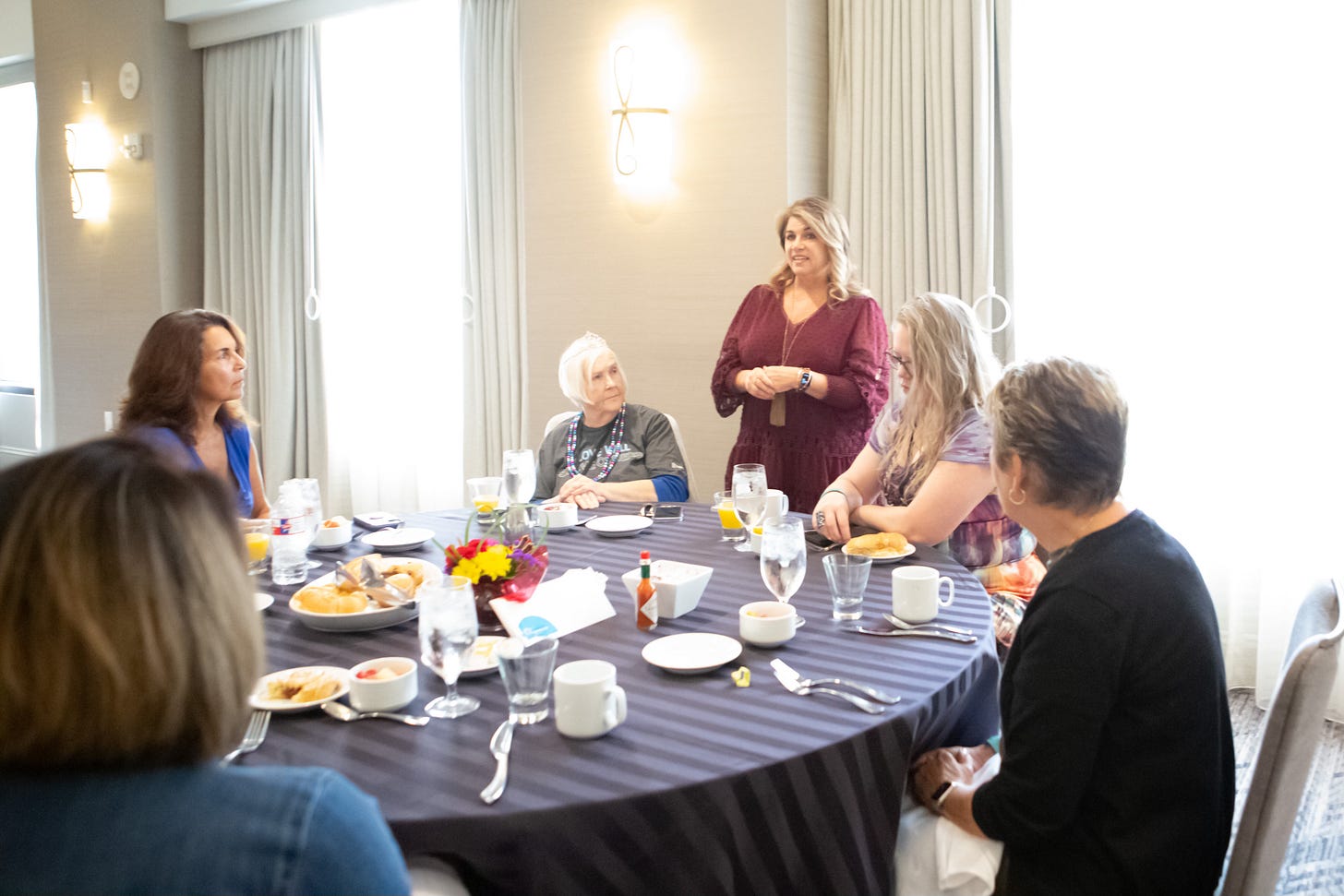How Generational Identity Shapes Women's Grief Journey
Modern Widows Club® Movement for Widow Care (MWC) Multi-Generational Approach
Women's experiences of grief and personal growth are profoundly shaped by generational identity, with each cohort bringing distinct approaches to loss that reflect their formative experiences, technological comfort, economic circumstances, and cultural values. This comprehensive analysis reveals that while grief is universal, the pathways through it vary dramatically across Baby Boomers, Generation X, Millennials, and Generation Z.
The most striking finding is that younger generations are revolutionizing grief expression—moving from stoic, private processing to open, community-supported healing—while older generations demonstrate greater baseline resilience but face barriers in accessing modern support resources. These differences create both opportunities and challenges for families, support systems, and mental health providers working across generational lines.
Generational Definitions and Date Ranges
Overview
Generational cohorts are defined by shared historical experiences during formative years (typically ages 15-25) that shape worldviews, values, and behaviors. These definitions help understand how different age groups approach grief, technology, relationships, and support systems.
The Six Primary Generations
Silent Generation (Pre-Boomers)
Birth Years: 1928-1945
Current Ages (2025): 80-97 years old
Key Characteristics: Depression and WWII influenced, most traditional in grief approaches, prefer formal institutions and established protocols
Baby Boomers
Birth Years: 1946-1964
Current Ages (2025): 61-79 years old
Formative Events: Post-WWII prosperity, Civil Rights Movement, Vietnam War, moon landing, Woodstock, women's liberation movement
Key Characteristics: Experienced dramatic social transformation, broke traditional gender roles while respecting some traditions, value face-to-face communication, prefer institutional support systems
Generation X
Birth Years: 1965-1980
Current Ages (2025): 45-60 years old
Formative Events: End of Cold War, rise of divorce rates, latchkey kid phenomenon, MTV, personal computers, economic recession of early 1990s
Key Characteristics: Self-reliant, pragmatic, witnessed parental divorce epidemic, comfortable with technology but not native to it, "sandwich generation" caring for aging parents and children
Millennials (Generation Y)
Birth Years: 1981-1996
Current Ages (2025): 29-44 years old
Formative Events: 9/11, Columbine, internet adoption, social media emergence, Great Recession, Obama presidency, normalization of therapy
Key Characteristics: Digital natives, mental health aware, delayed major life milestones, experienced multiple economic crises, comfortable with emotional expression
Generation Z
Birth Years: 1997-2012
Current Ages (2025): 13-28 years old
Formative Events: Smartphone ubiquity, social media from childhood, school shootings, COVID-19 pandemic, climate change awareness, social justice movements
Key Characteristics: True digital natives, values authenticity and diversity, mental health conscious but with ongoing stigma, expect immediate access to information and support
Generation Alpha (Post-Gen Z)
Birth Years: 2013-present
Current Ages (2025): 0-12 years old
Key Characteristics: Too young for widowhood grief analysis but represent future considerations for family dynamics
Formative Age Ranges by Generation (Current Focus Years)
When Each Generation Was 15-25 (Formative Period):
Baby Boomers: 1961-1989 (experienced social revolution)
Generation X: 1980-2005 (experienced technology adoption)
Millennials: 1996-2021 (experienced digital transformation)
Generation Z: 2012-2037 (experiencing AI/mobile-first world)
Important Notes for Application
Overlapping Experiences
Cuspers: People born at generational boundaries may identify with characteristics of adjacent generations
Cultural Variations: Generational experiences vary by socioeconomic status, race, ethnicity, and geography
Individual Differences: These are broad patterns, not rigid rules—individual preferences may differ significantly
Generational Approaches to Grief
Pre and Baby Boomers blend traditional mourning practices with emerging emotional openness. Having witnessed massive social change, they question established practices while maintaining family traditions. They prefer faith-based counseling and in-person support over digital resources.
Generation X developed exceptional self-reliance through childhood experiences of high divorce rates and latchkey independence. They prefer private, efficient grief processing while selectively utilizing professional help, serving as bridges between tech-savvy and tech-hesitant generations.
Millennials approach grief with unprecedented mental health openness, naturally integrating digital platforms into mourning practices. They use technology for announcements, support-seeking, and maintaining connections with deceased loved ones (continuing bonds therapy), viewing grief as opportunity for personal transformation.
Generation Z demonstrates radical authenticity in grief expression, expecting emotional intelligence in all relationships. Their digital-native approach naturally incorporates online resources, virtual memorials, and global connections with others experiencing loss.
Mental Health and Support Patterns
Mental health approaches reveal stark differences: only 22% of Baby Boomers have received mental health treatment compared to 37% of Generation Z. Baby Boomers carry highest stigma but report best outcomes (71% consider themselves mentally healthy) through stoic coping and self-sufficiency.
Technology Use:
Pre & Baby Boomers prefer phone calls and face-to-face communication.
Generation X balances digital and traditional approaches.
Millennials revolutionized grief through social media integration.
Generation Z expects authentic digital expression across multiple platforms.
Economic and Career Impacts
Financial Security: Baby Boomers enter widowhood with strongest financial position (median retirement savings $289,000). Generation X faces most dire outlook ($40,000 median savings). Millennials show resilience despite setbacks. Generation Z faces unprecedented workforce challenges.
All generations experience universal 22% income reduction and 10% wealth loss in first two years of widowhood, but impacts vary significantly by generation.
Relationship and Family Patterns
Remarriage: Baby Boomers show highest remarriage rates (50%) with pragmatic approach. Generation X demonstrates caution due to witnessing parental divorces. Millennials delay marriage but have lowest divorce rates when married. Generation Z continues delayed marriage trend with openness to diverse relationship structures.
Keep reading with a 7-day free trial
Subscribe to Widow Life™ to keep reading this post and get 7 days of free access to the full post archives.






